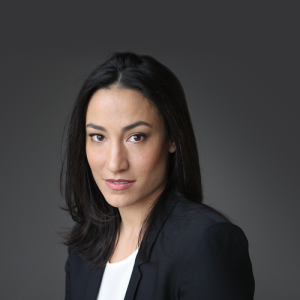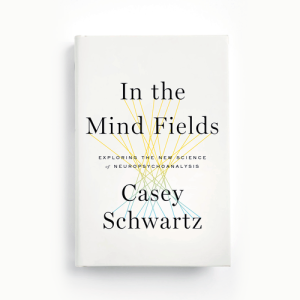 (A version of this interview appeared in the November 2015 issue of The Practicing Writer.)
(A version of this interview appeared in the November 2015 issue of The Practicing Writer.)
I’m 99 percent certain that among all authors I’ve interviewed, Casey Schwartz is the one I’ve known the longest: I met her back in the 1980s, when she was a small child (and I, a teenager), attending Thanksgiving celebrations and Passover Seders at the home of our mutual cousins. So perhaps there has been more than the usual sense of pride and admiration at work as, from the sidelines, I’ve watched Casey work on and launch her first book: IN THE MIND FIELDS: EXPLORING THE NEW SCIENCE OF NEUROPSYCHOANALYSIS (Pantheon Books).
From the jacket copy: “‘I’d never been a science person,’ Casey Schwartz declares at the beginning of her far-reaching quest to understand how we define ourselves. Nevertheless, in her twenties, she was drawn to the possibilities and insights emerging on the frontiers of brain research.” The resulting book is both informative and engaging (don’t worry if you, too, self-identify as “not a science person” — the scenes, stories, and characters will draw you in). And I’m delighted that Casey is here to answer a few questions about her book.
Casey Schwartz has worked as a staff writer at NEWSWEEK/THE DAILY BEAST, where she covered neuroscience, psychology, and psychiatry. Her writing has also appeared in THE NEW YORK TIMES and the NEW YORK SUN, among other publications. A graduate of Brown University, she holds a master’s degree in psychodynamic developmental neuroscience from University College London. She lives in New York City, where she grew up. IN THE MIND FIELDS is her first book.
Please welcome Casey Schwartz:
ERIKA DREIFUS (ED): How and when did you realize that you had a book idea here, Casey?
CASEY SCHWARTZ (CS): I went off to graduate school at the age of 23, thinking I would be a psychologist. I had chosen an unusual program: one year at the Anna Freud centre in London, studying the classic masterworks of Freudian theory, and a second year, back in the United States, studying the brain at Yale. The whole idea of this program — which had never existed before — was to attempt to combine the two disciplines, psychoanalysis, and neuroscience. In so many ways, these fields seem to be kind of profoundly unrelated — and there is so very little correspondence between them. It was fascinating for me to observe that fundamental tension, even culture clash, that exists in our approach to understanding the mind versus the brain. Since when are those two different things?
It was when I met my main character, Mark Solms, during the second year of graduate school that I felt this could be a book. Solms, a hugely charismatic South African psychoanalyst/neuropsychologist/Freud translator/dream researcher is on the forefront of the movement to combine neuroscience and psychoanalysis. But for me, it was clear that he was just a fascinating character, and that through him (if he would cooperate, of course), I could tell a story about these two fields.
ED: Some portions of the book are more memoiristic–sections that deal with your education and family, for instance. In other segments, you are most definitely in journalistic or “narrative nonfiction” mode, reporting on others’ lives and work. Did you gravitate more toward one or the other approach? Can you tell us a bit about that?
CS: Actually, that was one of the struggles and challenges of this book: how to be present as a breathing character in a book about neuroscience and psychoanalysis. I felt I had to be there — I didn’t want to take a perhaps more traditional science-writing approach to this material. It was definitely more fun, more free, to write the memoir sections. But I wasn’t interested in being personal beyond what I felt naturally fit this book.
ED: Interviewing skills were obviously key for this book. What advice to you have for novice (or nervous!) interviewers?
CS: Well, let me start by saying that I am the daughter of a Texan — and not just any Texan, but one who is herself both a great conversationalist and a great journalist. [Editor’s note: Casey Schwartz’s mother is author and journalist Marie Brenner.] This is the point: interviews are conversations. I grew up listening to my mother on the phone. She was full of questions, but it was an absolute exchange, and she was enjoying herself. It was pleasurable — and why shouldn’t it be? It was all in that great Texas tradition of warmth and direct engagement. I think it’s a mistake to be very stiff or formal or clinical about interviewing. Rather, do your homework, be prepared — but then let you curiosity guide you in the moment itself.
ED: After reading the book, I can’t help sensing that, as a community, psychoanalysts are more willing to engage with neuroscience than vice versa. Would you say this is a fair comment? If so, what do you think explains these tendencies?
CS: I think it’s hard to generalize, but you might be right. Basically, psychoanalysis as a field is in trouble. Fewer and fewer patients seek it out; its institutes are all declining dramatically in membership. And we all know why this is — psychoanalysis feels old-fashioned, it feels passé, it feels like something we don’t really have a need or a place for in our incredibly fast-moving, data-driven culture, where almost every whim can be satisfied by clicking a button on a computer screen. So in a sense, psychoanalysis needs neuroscience much more than neuroscience feels it needs psychoanalysis.
I don’t know if I’ve ever met a neuroscientist who says: I desperately need to understand Freud’s concept of the unconscious. But it’s ironic — maybe they should. It took science until roughly 1980 to accept the idea that most of what happens in our brains happens outside of our conscious awareness. Yet Freud had been hip to this fact for almost an entire century. So who knows how much more progress neuroscience could have made by now if its practitioners had been willing to take some of these interesting, deep psychoanalytic ideas about how the mind works, and apply them to the studies of the brain?
ED: What’s next in your writing career?
CS: Not sure. Maybe fiction!
ED: Anything else you’d like us to know?
CS: Yes. This is intended for every writer who is struggling with something (aka, every writer). The piece of advice I’ve been given in the last 10 years is one word: persevere.
Thank you so much, Casey!
To learn more about Casey Schwartz and IN THE MIND FIELDS, please visit www.CaseySchwartz.com.